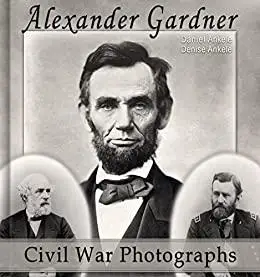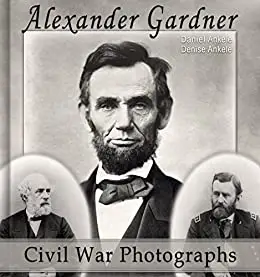Alexander Gardner: 100 Civil War Photographs - Annotated by Daniel Ankele
English | June 13, 2014 | ISBN: N/A | ASIN: B00657YCBA | 111 pages | MOBI | 10 Mb
English | June 13, 2014 | ISBN: N/A | ASIN: B00657YCBA | 111 pages | MOBI | 10 Mb
ALEXANDER GARDNER CIVIL WAR PHOTOGRAPHS Art Book contains 100 Reproductions of portraits, Civil War landscapes and historic scenes with annotations and interesting facts page below. Book includes Table of Contents, Top 50 Museums of the World, and is compatible with all Kindle devices, Kindle for iOS and Android tablets (use rotate and/or zoom feature on landscape/horizontal images for optimal viewing).
BORN: October 17, 1821 in Paisley, Scotland.
DIED: December 10, 1882 in Washington, DC, USA
MEDIUM: Photography
INTERESTING FACTS:
§ In 1850, Alexander Gardner and his brother James travelled to the United States to establish a cooperative community in Iowa.
§ In 1851 after seeing a Mathew Brady exhibition, Gardner began experimenting with photography on his own.
§ In 1856, Gardner was invited by Mathew Brady to work at his gallery in New York City.
§ Gardner worked at Brady’s Washington DC gallery from 1858 to 1862. In 1861, Brady sent out Gardner, O’Sullivan, Barnard, and Pywell to photograph the Civil War.
§ In 1862, Gardner was the first of Brady's photographers to document the aftermath of America's bloodiest day, the Battle of Antietam.
§ In 1863, Gardner left Brady to open his own gallery and photograph the Civil War. He became the official photographer of the army of the Potomac.
§ Gardner photographed the Battles of Antietam, Fredericksburg, Gettysburg, and Petersburg.
§ In 1863, Gardner began photographing Abraham Lincoln. He took more photographs of Lincoln than any other photographer. He also took the last photograph of Lincoln five days before he was assassinated.
§ Gardner photographed the conspirators to President Lincoln’s assassination and their execution. A Gardner portrait of the actor John Wilkes Booth was actually used on a wanted poster following Lincoln's assassination, which was the first time a photograph was utilized in that way.
§ In the late 1860s Gardner traveled to the west, taking striking photographs of Indians. He eventually returned to Washington, working for the local police devising a system for taking mugshots.
Feel Free to contact me for book requests, informations or feedbacks.
Without You And Your Support We Can’t Continue
Thanks For Buying Premium From My Links For Support
Without You And Your Support We Can’t Continue
Thanks For Buying Premium From My Links For Support



